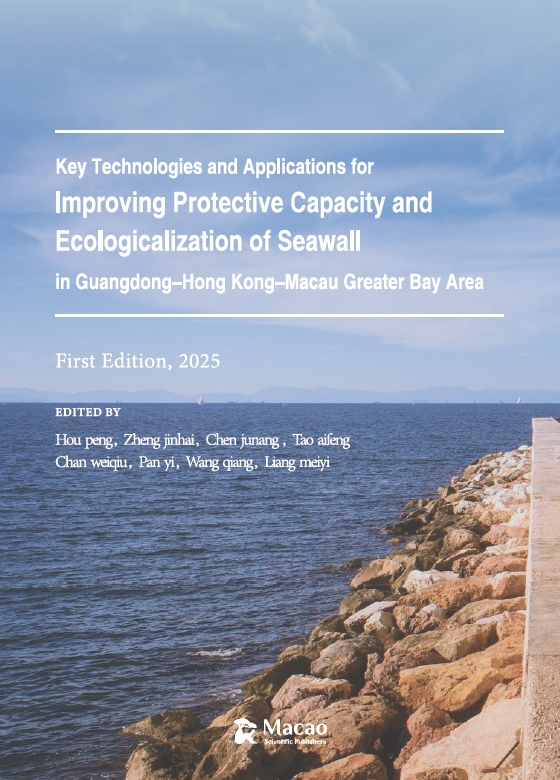Published:March 2025;
Format:Hardback, 1/16;
Pages:164;
Number of words:256,545
Copyright: © 2024 Authors & MOSP; Copyright Inquiry: book@mospbs.com
ISBN: 978-99981-10-26-7
Keywords: Nutritional; Tea Polyphenols; Health
*Correspondence: Pearl River Water Conservancy Commission Pearl River Water Conservancy Research Institute. Acknowledgments: None.
·Preface·
Guangdong-Hong Kong-Macau Greater Bay Area is located in the south of Guangdong Province, at the tail of the Pearl River Basin, bordering the South China Sea. It is one of the areas with the most frequent landfall of storm surges and the most serious threat of typhoon surges in China. In recent decades, under the background of global climate change, the number and intensity of storm surge disasters are increasing. The storm surge disasters caused by the typhoon landing in
Guangdong-Hong Kong-Macau Greater Bay Area seriously threaten the safety of peoples lives and property and social and economic development. The seawall is an important infrastructure to ensure the moisture-proof safety of the Greater Bay Area and the lifeline of economic and social development in coastal areas. However, the seawall has been eroded by ocean winds and waves for a long time, and the damage and collapse of the seawall occur from time to time, threatening the moisture-proof safety of the Greater Bay Area. With the construction of Guangdong-Hong Kong-Macau Greater Bay Area becoming a major national strategy, higher requirements have been put forward for the construction of urban seawalls in terms of safety and landscape. However, the traditional methods of upgrading and reinforcing seawalls are mainly heightening and thickening, and the elevation of the dike top will be greatly raised, resulting in the "siege" of seawalls, which is in prominent contradiction with the demand of urban hydrophilic landscape. At the same time,the seawall, a gray hard project made of steel bars and cement as the main materials, directly cuts off the biological connectivity between land and sea, and has a great impact on the coastal ecosystem.
The book is divided into five chapters. The first chapter summarizes the research progress on seawall damage forms and ecological applications, mainly written by Hou Huan and Wang Qiang; Chapter 2 introduces the high-standard construction technology system of urban seawalls in Guangdong-Hong Kong-Macau Greater Bay Area, mainly written by Hou Huan, Zheng Jinhai, and Pan Yi; Chapter 3 introduces the key technologies of seawall wave suppression, storage and drainage including "front of the embankment-body of the embankment-back of the embankment", mainly written by Tao Aifeng, Chen Weiqiu, and Wang Qiang; Chapter 4 introduces a series of products for ecological transformation of seawalls, mainly written by Tao Aifeng, Chen Junang, Pan Yi, and Liang Meiyi; Chapter 5 summarizes the contents of the book, mainly written by Pan Yi and Chen Weiqiu. Wang Qiang is responsible
For the drafting of the whole book, and Hou Huan and Zheng Jinhai are responsible for the editing and proofreading work.
The related research work of this book has been funded by the National Key R&D Program "Key Technologies and Applications for Comprehensive Protection of Marine Dynamic Disasters Based on Nature (SQ2023YFC3000010)" and the Ministry of Water Resources Major Science and Technology Project "Key Technologies for Improving Seawall Resilience in Changing Environments". During the research process, I received professional guidance from professor-level senior engineers such as Hu Xiaozhang, Wu Xiaoming, Chen Rongli, and Liu Cheng, as well as exchanges and guidance from many colleagues. I would like to thank you!
Guangdong-Hong Kong-Macau Greater Bay Areas coastal geomorphological structure is complex, the geological foundation is quite different, the regional economic and social development level is also significantly different, the degree of disaster impact under the influence of typhoon storm surge is different, and there are great differences in disaster prevention measures. Due to the authors lack of professional ability and basic information,errors and omissions in the book are inevitable. Readers criticism and corrections are sincerely welcome.
·Content·
Chapter 1: Introduction
Chapter 2: Technical System of High Standard Construction of Urban Seawalls in Guangdong-Hong Kong-Macau Greater Bay Area
Chapter 3: Key Technologies for Seawall Wave Suppression, Storage and Drainage
Chapter 4: Ecological Transformation of Seawall
Chapter 5: Conclusion
Reference
ACKNOWLEDGEMENT
·About the Authors·
Mr. Hou peng is Pearl River Water Conservancy CommissionPearl River Water Conservancy Research Institute.
Mr. Zheng jinhai is Hohai University.
Mr. Chen junang is Guangdong Water Conservancy and Hydropower Survey and Design Institute Co., Ltd.
Mr. Tao aifeng is Hohai University.
Mr. Pan yi is Hohai University.
Mr. Wang qiang is Pearl River Water Conservancy Commission Pearl River Water Conservancy Research Institute.
Mr. Liang meiyi is City University of Hong Kong.
Mr. Tao aifeng is Hohai University.
·Copyright Information·
Nutritional Research and Health Benefits of Tea Polyphenols
Hardcover, Word Count: 256,545 words
First Edition: March 2025
Published by Macao Scientific Publishers (MOSP)
Printed by HanLin Publishing Group, Macao, China
ISBN: 978-99981-10-26-7
·Retrieval·
Macao Scientific Publishers
Address: Block 11/F, Hengchang Building, Nanwan Avenue, Macao, 999078, China
For more information, contact book@mospbs.com
This publication is safeguarded by copyright. Unless otherwise specified under statutory exceptions or in accordance with the provisions stipulated within pertinent collective licensing agreements, any reproduction of any segment of this publication is strictly prohibited without obtaining the written authorization from Macao Scientific Company.
For detailed information regarding the publishing process at Macao Scientific Publishers, kindly visit our official website https://www.mospbs.com/
Copyright © Macao Scientific Publishers. All rights reserved.


